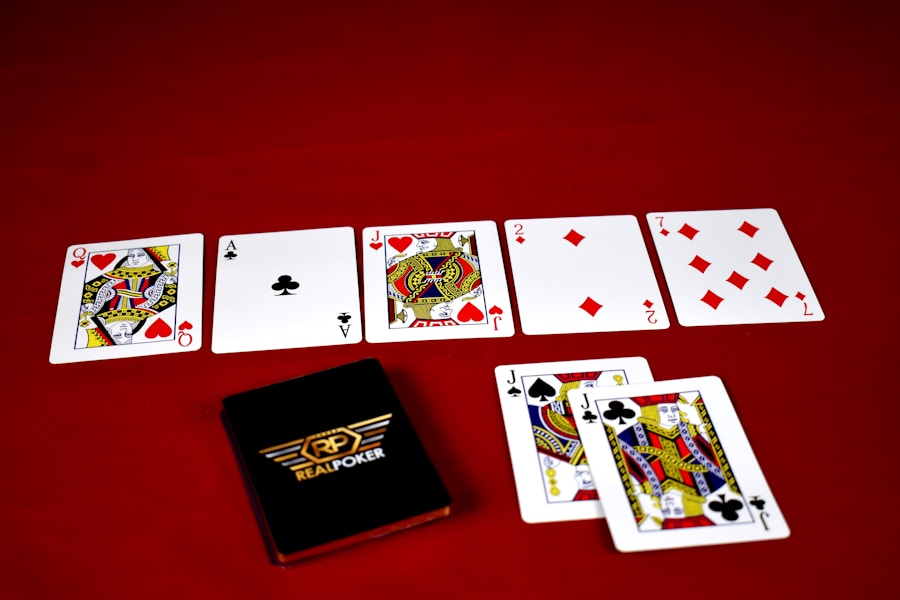Download links
How to install Mastering the Art of Blackjack: Tips and Strategies APK?
1. Tap the downloaded Mastering the Art of Blackjack: Tips and Strategies APK file.
2. Touch install.
3. Follow the steps on the screen.
Description
Blackjack, often referred to as 21, is a popular card game that combines elements of chance and skill. The objective is straightforward: players aim to have a hand value that is closer to 21 than the dealer’s hand without exceeding that number. Each player is dealt two cards, and the dealer also receives two cards, typically one face up and one face down.
The game is played with one or more standard decks of 52 cards, and the values of the cards are simple: numbered cards from 2 to 10 hold their face value, while face cards (kings, queens, and jacks) are worth 10.
The allure of blackjack lies not only in its simplicity but also in the strategic depth it offers.
Unlike many other casino games that rely solely on luck, blackjack allows players to influence the outcome through their decisions. This interplay between chance and strategy has made it a favorite among gamblers and casual players alike. The game is typically played in a casino setting, but it has also found a home in online gaming platforms, where players can enjoy the thrill of the game from the comfort of their own homes.
Understanding the basic mechanics of blackjack is essential for anyone looking to engage with this classic card game.
Key Takeaways
- Blackjack is a popular card game where the goal is to beat the dealer’s hand without going over 21.
- Understanding the rules and terminology of blackjack is essential for success, including terms like “hit,” “stand,” “double down,” and “split.”
- Developing a winning strategy involves knowing when to make certain moves based on the cards in your hand and the dealer’s upcard.
- Mastering card counting techniques can give players an advantage by keeping track of the high and low cards that have been dealt.
- Managing your bankroll is crucial for long-term success in blackjack, including setting limits and sticking to a budget.
Learning the Rules and Terminology
Placing Bets and Dealing Cards
The game begins with players placing their bets before any cards are dealt. Once bets are placed, each player receives two cards, and the dealer also receives two cards, with one card facing up (the upcard) and one facing down (the hole card).
Understanding Key Terms
Players then take turns deciding how to play their hands based on the value of their cards and the dealer’s upcard. Key terms in blackjack include “hit,” “stand,” “double down,” and “split.” Hitting means requesting an additional card to improve one’s hand, while standing indicates that a player is satisfied with their current hand and does not wish to take any more cards. Doubling down allows a player to double their initial bet in exchange for committing to stand after receiving one additional card.
Busting and Dealer Rules
If a player’s hand exceeds 21, they automatically lose, regardless of the dealer’s outcome. The dealer must follow specific rules as well; typically, they must hit until their hand reaches at least 17. This creates a dynamic where players must carefully consider their options based on both their own hand and the dealer’s visible card.
Developing Effective Strategies
Familiarity with these rules and terminology lays the groundwork for developing effective strategies in blackjack.
Developing a Winning Strategy

Developing a winning strategy in blackjack requires a combination of understanding basic strategy charts and adapting to specific game conditions. Basic strategy charts provide players with optimal moves based on their hand value and the dealer’s upcard. For instance, if a player has a total of 16 and the dealer shows a 10, basic strategy suggests that hitting is the best option, as standing would likely result in a loss against the dealer’s strong hand.
In addition to following basic strategy, players should also consider factors such as table rules and the number of decks in play. For example, some casinos offer games where the dealer stands on soft 17 (a hand containing an ace valued as 11), while others require the dealer to hit on soft 17. This subtle difference can significantly impact a player’s strategy.
Moreover, games with fewer decks tend to favor players more than those with multiple decks due to the increased likelihood of favorable card distributions. Another critical component of developing a winning strategy is understanding when to deviate from basic strategy based on specific situations. For instance, if a player has a strong read on the dealer’s tendencies or if they are aware of certain cards that have already been played, they may choose to adjust their strategy accordingly.
This adaptability can provide an edge over less experienced players who strictly adhere to basic strategy without considering situational factors.
Mastering Card Counting Techniques
| Technique | Success Rate | Difficulty Level |
|---|---|---|
| Hi-Lo System | 70% | Intermediate |
| KO System | 75% | Advanced |
| Omega II System | 80% | Expert |
Card counting is a technique that skilled blackjack players use to gain an advantage over the house by keeping track of the ratio of high cards to low cards remaining in the deck. While it may seem daunting at first, mastering card counting can significantly enhance a player’s ability to make informed betting decisions. The most common method used in casinos is the Hi-Lo system, which assigns values to cards: low cards (2-6) are assigned a value of +1, high cards (10-Ace) are assigned -1, and cards 7-9 are considered neutral with a value of 0.
As cards are dealt during gameplay, players keep a running count based on these values. A positive count indicates that there are more high cards left in the deck, which favors the player, while a negative count suggests that low cards dominate, favoring the dealer. To convert this running count into a true count that accounts for the number of decks remaining in play, players divide the running count by the estimated number of decks left.
This true count provides a clearer picture of when to increase bets or adjust strategy. While card counting is not illegal, casinos are vigilant about identifying players who employ this technique. To avoid detection, counters often employ various strategies such as varying their betting patterns or disguising their counting methods through casual conversation or distraction techniques.
Mastering card counting requires practice and discipline; however, when executed correctly, it can provide a significant edge over the house.
Tips for Managing Your Bankroll
Effective bankroll management is crucial for any blackjack player looking to sustain their gameplay over time. One fundamental principle is setting a budget before starting any session and sticking to it rigorously. This budget should reflect not only what you can afford to lose but also what you hope to achieve during your gaming session.
By establishing clear limits on both wins and losses, players can avoid emotional decision-making that often leads to chasing losses or overextending themselves. Another important aspect of bankroll management is determining appropriate bet sizes based on your total bankroll. A common guideline is to bet no more than 1-2% of your total bankroll on any single hand.
This conservative approach allows players to withstand inevitable losing streaks without depleting their funds too quickly. Additionally, adjusting bet sizes based on your current bankroll can help maintain longevity in your gameplay; for instance, increasing bets during winning streaks while scaling back during losses can help preserve your bankroll. Players should also consider taking breaks during extended gaming sessions.
Fatigue can impair judgment and lead to poor decision-making at the table. By stepping away periodically, players can refresh their minds and return with renewed focus and clarity. Furthermore, tracking wins and losses over time can provide valuable insights into your overall performance and help refine your strategies moving forward.
Knowing When to Hit, Stand, Double Down, or Split

Hitting and Standing
Hitting is generally advisable when your hand totals less than 12 since there is little risk of busting. However, as your total increases—especially when approaching 17 or higher—the decision becomes more nuanced. For example, if you have a total of 16 against a dealer’s 10, basic strategy suggests hitting despite the risk because standing would likely result in losing against a strong dealer hand. Standing becomes more favorable when you have a total of 17 or higher unless you are holding a soft hand (a hand containing an ace valued as 11). In such cases, hitting may still be beneficial if it allows you to improve your hand without busting.
Doubling Down
Doubling down is an aggressive move that can yield significant rewards; it is typically recommended when you have a total of 10 or 11 against a dealer’s lower upcard (2-9). This tactic allows you to maximize potential winnings when you have a strong chance of improving your hand.
Splitting Pairs
Splitting pairs can also be advantageous but requires careful consideration based on both your hand and the dealer’s upcard. For instance, splitting aces or eights is generally advisable since it creates two potentially strong hands. Conversely, splitting tens or fives may not be wise; standing on tens provides a solid total of 20, while fives can be doubled down for better potential outcomes against weaker dealer hands.
Mastering these decisions through practice and familiarity with basic strategy will enhance your overall performance at the blackjack table.
If you’re a fan of Blackjack, you may also be interested in learning English for free through Cake. Check out this article here to discover a fun and interactive way to improve your language skills while enjoying your favorite card game.
FAQs
What is Blackjack?
Blackjack is a popular card game played in casinos around the world. The objective of the game is to beat the dealer by having a hand value closer to 21 without going over.
How is Blackjack played?
In Blackjack, players are dealt two cards and can choose to “hit” (receive another card) or “stand” (keep their current hand). Players can also choose to “double down” (double their bet and receive one more card) or “split” (if they have two cards of the same value, they can split them into two separate hands).
What is the value of the cards in Blackjack?
In Blackjack, the numbered cards are worth their face value, face cards (Jack, Queen, King) are worth 10, and Aces can be worth either 1 or 11, depending on the player’s choice.
What is a “Blackjack” in the game?
A “Blackjack” occurs when a player is dealt an Ace and a 10-value card (10, Jack, Queen, King) as their initial two cards. This results in an automatic win for the player, unless the dealer also has a Blackjack.
What are the basic rules of Blackjack?
The basic rules of Blackjack include trying to get a hand value as close to 21 as possible without going over, beating the dealer’s hand, and understanding the options to hit, stand, double down, or split.





